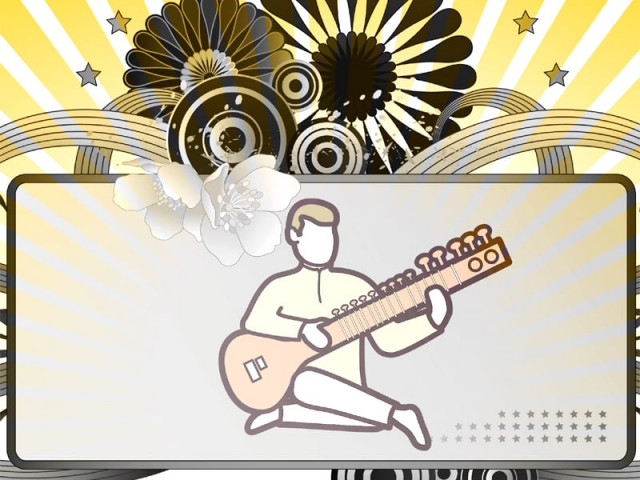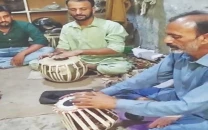Finding classical sur in modern music
Classical singing has its roots in Hindustani music and is representative of the sub-continental culture.

The trend of learning and practicing classical music has been on the rise in recent times. With the advent of fusion music — that gained popularity in the last decade — more and more youngsters are turning towards classical music.
Classical singing — which depends mainly on sur (musical note) — has its roots in Hindustani music and is representative of the sub-continental culture. In contemporary times, certain changes in the preferences of society have allowed the art of raag and sur to flourish. The skill of raag (classical scales and modes) has gained attention and is accruing new levels of popularity for this genre of music.
Ustaad Naseerudin Saami is possibly one of the most popular classical music teachers in Pakistan. He has a school in Karachi with approximately 50 students, while in Lahore he has around 12-15 students, to whom he gives private tuitions. “Young people are tired of partying and are searching for something that provides inner peace and tranquillity,” says Saami. “After learning classical music, a student automatically gets interested and wants to get trained in the field,” he adds. Musician and producer Rohail Hyatt and author Ali Sethi are some of Saami’s well-known students.
The process of learning classical music is more about the student showing a persistent willingness to learn. “We not only work on teaching singing techniques, we also teach a philosophy of life,” explains Saami. “I teach and perform but the main thing is that people should develop an interest, because it takes time to understand classical music.” Once the interest is developed, Saami chalks out a plan according to which the student can learn sur, which for him is one of the purest forms of classical music. Saami states that this tradition dates back to the musical lineage of Amir Khusro and his students. Saami himself learned the art from his ancestor, Mian Samaat bin Ibrahim, who was also a student of Khusro.
Saami started playing music at the age of 12, so he has seen how the musical industry of Pakistan has evolved and reformed. According to him, the classical music industry was active till 1977 but after this, music in general took a backseat. Artists struggled for nearly 30 years to find recognition until the industry finally picked up in 2000. “After 30 years of hard work, classical music is popular again,” says Saami with pride.
“I knew when it stopped in 1977 that I would have to take responsibility and do whatever I could do to ensure the art survived,” says Saami. A great advocate of classical-modern fusion, Saami believes that this genre can help the revival of classical music. “Fusion has a unique role to play as joining the two can make it easier for the younger generation to understand and appreciate classical music,” Saami says.
This statement has been backed by classical musician Shafqat Salamat — who has worked with several music institutions abroad — and feels that fusion has always been a good way to make people get involved with different music genres. Salamat claims that the youth was extremely interested in a workshop he conducted on classical music at Al-Hamra Arts Council in Lahore.
However, Salamat emphasises that classical music’s recent popularity is restricted to exclusive artists only and does not cater to the common artists. “The overall scene is very good but traditional musician families have not been given a chance,” says Salamat. “Common musicians have to be promoted and academies should be made to make sure classical art is sustained.”
Published in The Express Tribune, August 9th, 2011.



















COMMENTS
Comments are moderated and generally will be posted if they are on-topic and not abusive.
For more information, please see our Comments FAQ